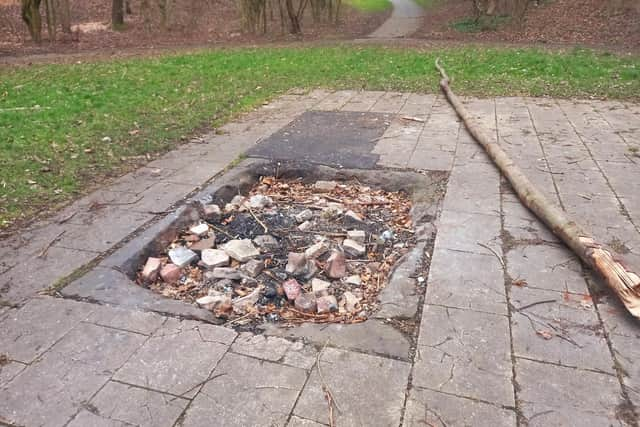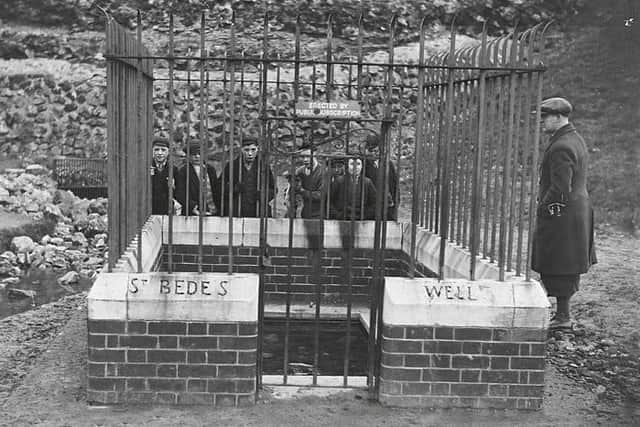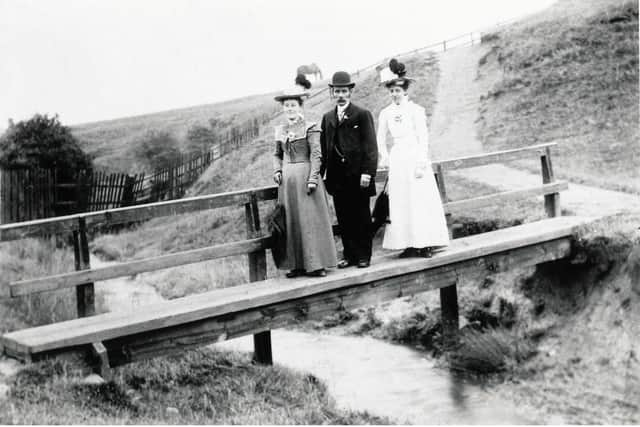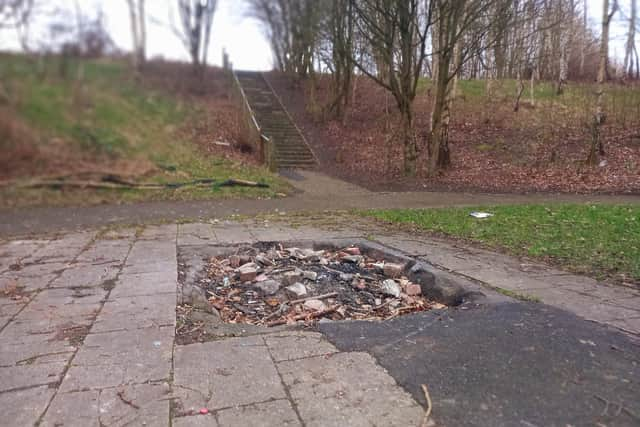Jarrow’s St Bede’s Well - perhaps the saddest historical site in the whole region
and live on Freeview channel 276
The legend
We go back, of course, to the time of the Venerable Bede (screen goes wobbly). A saint and the most famous scholar of his time, circa 672 to 735 AD, he is said to have drawn water from the well himself when he was a boy, then later preached at the site.
When he eventually became gaffer at St Paul’s monastery, a-mile-and-a-bit away, he would send out his monks to collect water from the well; enabling them to make the tea and have a wash and brush up.


Advertisement
Hide AdAdvertisement
Hide AdA millennium or so rolled by and the stories got better. As they do.
The earliest known reference to the well is in 1702 from someone called Floyer, whom we presume to be the physician John Floyer, in his snappily entitled The Ancient Psychrolousia Revived, or an Essay to Prove Cold Bathing Both Safe and Useful. A real page-turner.
He wrote: “Nothing is more Common in this Country… for the preventing or curing of Rickets, than to send Children of a Year old and upwards, to St Bede’s Well.”
It seems that the well was being attributed with healing properties. Even by the late 19th Century there seems to have been a belief, or at least a superstition, that the well’s water had medicinal qualities as well as being a bringer of luck.


Sceptics (booo!)
Advertisement
Hide AdAdvertisement
Hide AdThe stories have been taken to task by Santa-deniers, childhood spoilers and all-round rotters with the most underhand weapon in their armoury. Reason.
To begin with, there was a well within the monastery; so why would Bede send anyone to fetch water from another one over a mile away? He may have done it for a laugh, a bit like sending the new lad for a tin of tartan paint, but it seems unlikely and not very venerable.
Furthermore, Bede’s Burn (since culverted away) ran right beside the well, so what would have been the point of all the back-breaking work required to construct it?


According to the Donmouth website, there might never even have been a well there at all. It states that in the 1960s pupils of Jarrow Central School were allowed to dig on what was by then a solid surface – “and none of them fell through”.
Advertisement
Hide AdAdvertisement
Hide AdPresumably the idea was that if any of the youngsters suddenly disappeared into the earth, then they might be onto something (it would be 1974 before health and safety laws were in place). So perhaps it was a spring.
A worse possibility still for the romance of the site is that even its name might have nothing to do with Bede. There is a Middle English (Chaucer’s language) word “bæð”, which was pronounced “baed” and corresponds with “bath”. “Bede’s” could just be a corruption of “bæð”. Bah!
(Middle English redeems itself slightly, as far as we’re concerned, with the word “clæg” meaning clay, from which the North East word “claggy” is derived).


Renovation – sort of
Still, who needs indisputable historical facts to create a tourist attraction? The legends of the Lambton Worm and Loch Ness Monster are largely unscathed, despite their stories being founded on arrant nonsense.
Advertisement
Hide AdAdvertisement
Hide AdBy 1908 the well, as we shall continue to refer to it, was looking shabby and was threatened by an ever-expanding slag heap from Palmers furnaces, which had been there since the 1850s.
An appeal to the public raised some money to preserve the well, but it took until 1932 for a small wall basing eight feet railings to be built around it, with a sign proudly saying “Erected by public subscription”.
The wall and railings were really just a folly, although they fooled most people for many years. It was understandably believed that the railings were there to prevent people from plummeting down the well. In fact there was nowhere to plummet to. It was solid ground.
But it became increasingly dilapidated again, although improvements were made to the area in the 1980s and 1990s.
Advertisement
Hide AdAdvertisement
Hide AdThe slag heap was finally removed, to no great lament, then Bedeswell Park and Campbell Park were created. Pathways leading to the well were laid.
And now…
According to someone called Brand, writing in 1789: “My informant has seen twenty children brought together on a Sunday, to be dipped in this well; at which also, on Midsummer-eve, there was a great resort of neighbouring people, with bonfires, musick, &c [sic]”.
A visit to the well today confirms that this tradition continues; although that is putting a somewhat generous spin on matters. There is evidence that revellers, as we shall refer to them, use the place for a tipple around a bonfire, perhaps after evening mass.
But it is otherwise largely ignored. Anyone who has read up on the well and been inspired to see it for themselves will, to put it mildly, have been underwhelmed when they arrived there.
Advertisement
Hide AdAdvertisement
Hide AdThe improvements made 30-odd years ago are no longer obvious. St Bede’s Well is now just an oblong hole in the ground, a few inches deep and filled with rubble and the occasional empty beer can.
There is no escaping the conclusion that it’s a sad sight. There is no signage to indicate its heritage, or even its existence.
At the very least there are hundreds of years of history attached to the well; perhaps much more. It sits in what is quite a pleasant place for a walk, but that’s about as far as our admiration can stretch. Surely more needs to be made of it.
True, much of its story is folklore or apocryphal at best. But since when did that matter?
